Story Pile: Cul De Sac
We’re going to do something a little bit different this time.
This Story Pile is going to be about the newspaper comic Cul De Sac, a comic I really like, but which is also, unlike other media I cover, actually kind of already represented online in its entirety as it is. Like, if you want to go read Cul De Sac, you can… just… do that. The other thing we’re going to talk about is Calvin and Hobbes, which Bill Watterson, the creator, has been similarly archived online, but also crucially, not by me.
Normally I break up these essays on media with pictures from the media in question, or youtube embeds or whatever, but GoComics lacks that functionality and while I could always take the strips, upload and offer them in the context of my own work and you know, review and educational purposes (which it is), I’d still feel just a bit of a dick about it. This is much as with the work of Gary Larson, who has asked that people not circulate Far Side strips online, and, well, they do anyway.
With that in mind, I’m making the conscious decision to not put any of the comic strips here in this blog post. Instead, I’m going to try and keep it short.
Continue Reading →June 2018 Wrapup
What happened in June? Lots of things!
First up, June’s blog posts! I had a lot I was really proud of here. First of all, in the academic blogging, I wrote about how autoethnography is important to help erase base assumptions about the perfection of objectivity. I wrote about Hyrule Warriors and how it contributes to some of our worst feelings of awful nerd garbage. I also wrote two posts exploring Arrested Development, split between the old and new versions, and even two fun history posts about The Winged Hussars and the Saigo Rebellion.

We did hit an interesting milestone, though. As of tomorrow’s post (which is a Story Pile post, hence doing this today), I will have posted daily on this blog, non stop, for an entire year.There have been some hiccups, but they’re all scheduling problems – times when a blog post was in the queue and didn’t happen. Beyond that, here is a grid of dots all nicely lined up.This month’s shirt design was a little bit of an afterthought – I haven’t been playing around with shirt designs too much. Still, it was the ten year anniversary of the infamous loss meme, and I felt it would be a nice easy thing to commemorate. Also, it made Ettin laugh, which really is all the incentive I need to do something silly these days.

You can get this shirt on my Redbubble. I would be deeply surprised if anyone did.
What about the monthly game content? Well, here’s where fingers are crossed and breath is held. As I write this, I’m waiting on the last bits of art from artists for the Nyarr. Any collaborative work is slower and more complicated than anything else, but, here’s hoping in the next few days I can come back and change this to indicate we got this launched within June.
This month’s video project, on the other hand, was a video exploring Ziggurat, a wonderful game I got for free, and how it had a fundamentally different philosophy to Hexen, the game it’s most compared to.
The big lesson of this game was how ‘play overlaid with spoken essay and visual aids’ could come together reasonably nicely! With a little more forward planning I think I could really make something of this style.
It was the last few weeks of teaching and marking for the first semester, which means as of right now I’m not employed, which is a bummer. If you have any work for graphic or game design or the like, let me know!
I also did a bit more academic blogging, and got through some more books, or chunks thereof for my PhD. There’s been a sort of restructure for that, meaning that I’m doing more longer reads of the works to keep pace with my supervisor, so instead of trying to do a surface impression of a host of books I’m instead able to give in-depth reading on chapters at a time.
June is also a month of birthdays! Fox had one, as did one of her family members, and one of mine. During this, I had a few cooking experiments, which I’ll write about later when I’m more comfortable with the experience of what I did. There’s a certain silly incestuousness of recipes, really – I got the recipes off the internet, why should I retell you about them? Did I do anything major to change them? Probably not worth it. Still, if I find something I think is worth reading, I’ll get onto that.
Anyway, if you’re keeping track, July is going to feature a series of Story Pile entries focused on Kamen Rider W, so if you were hanging out for those essays, here we go. I did want to make them as video essays, but I don’t yet have the material, and I didn’t want to leave it longer.
I wonder if it’s a bad idea to turn articles into videos. I mean that’s what I do already – I write an article for reading, and then put a video to it. So I don’t like, avoid that. Anyway, we’ll cross that bridge when we get to it.
MTG: Pet Cards IX, Alara Block
Alara was our first taste of Mythic Rares. It was also our first major shakeup of the colour pie since Future Sight, a time when those ideas tested in that previous set were made to bear the burden of an entire expansion. Now, multicolour sets are a pretty cute way to shift some stuff around – you can print cards with a few mutual abilities and see if they play together interestingly, see if they work, and if they don’t really work, you can just let them go, because the other colour could be seen as doing the lifting.
Shard of Alara was also one of the first places we got a modern look at three-colour design. There were a lot of characters who were generically gold, but triple coloured cards didn’t have a strong identity so far. Alara is where we had that stuff encoded for the new, for the now.
Continue Reading →What’s Autoethnography?
Hey, let’s start with an extremely difficult thing to define and unpack it a little.
Autoethnography is a method for qualitative research that focuses on academically exploring the personal experiences and autobiographical records of the researcher.
Okay, now to unpack that a little more. Qualitative research is research that focuses on examining things that cannot be easily or readily reduced into hard values — that’s quantitative research. So qualitative research is about, well, qualities. Qualitative research is very much about asking people questions, divining their experiences, taking them seriously and observing connections and patterns.
You might be familiar with surveys that ask you to rank things in order; that’s quantitative. Surveys that ask you your opinions or feelings, those are qualitative. Qualitative research is generally harder and slower and tends to need a human interpreter, rather than responding to mathematical tools.
Second academically exploring things is to look at things not as an expression but rather as a piece of text that can be related to with other academic tools. It’s bringing to bear analysis tools reserved for examining texts to bear on the the account of the experience.
Personal experience, I hope is pretty self explanatory. Autobiographical records are the things you, yourself, record about what you experience. This is normally seen as pretty shifty in academic research – after all, if you can get an objective measure of something, best to do that, rather than write down what happened to you.
With that breakdown in mind, what’s a way to explain autoethnography simply?
The first way is: There is no clear answer right now. It’s a complicated thing and it means a lot of things.
The second way, the pragmatic way, is that autoethnography is the process of experiencing something; writing about your experience; then interrogating what you wrote –not what you experienced – as an academic text.
Or shorter: You write, then you examine what you write.
Why do we use it? A couple of reasons. One it’s really hard to write about some things with quantitative research. Psychology, psychotherapy, art participation, sociological experiments, and on-the-spot historical accounts are all pretty hard to account. It’s useful for some situations where other forms of research would need larger examinations or complicated data gathering, and you don’t have a lot of time, like the immediate aftermath of an event. It’s also really useful for recognising processes that don’t standardise well, like following an artist or a composer’s work.
It’s not a perfect method at all – it’s got a lot of boundary problems, and if your autoethographic work moves near things that you can quantitatively research, and then don’t, you run the risk of leaving something untethered from more readily provable facts. It’s but one tool in the toolbox.
It’s also a handy practice to know of. If you’re prone to writing about your experience, you can go back and re-examine that writing as if it were academic text. I guess that always comes back to my personal position of take the things people do seriously.
Game Pile: Rhino Hero Super Battle
I’ve already looked at the beautiful, sassy, and funny Rhino Hero by Haba Games, and wouldn’t you know it, after I got it for my mother, I then got it for my sister, and then she – with some help – wound up getting Rhino Hero Super Battle for herself, and played it with her kids. I for one, am shocked, shocked to find that Haba, a games company that’s been making games for eighty years, has managed to, once again, make an absolute corker.
Shut Up and Sit Down did a comically in-depth review of this game where they pretended to take it all super duper seriously on like, an academic level, but I’m kind of… not… really… kidding? when I bring this game up as a wonderful example of the kind of stepping stone you can use to make sure designers recognise the importance of materiality and base assumptions in their game designs.
C’mon, I’ll explain.
Continue Reading →Symmetrical Enfolding
The simplest kind of game you can design is a symmetrical, procedural, player-versus-player game. I tell students this; if all the players engage with the game the same way, you have to design one system that can be properly positioned to oppose itself. Any race game is like this. Almost all traditional poker-based games are like this.
I have been designing, in my opinion, too many symmetrical, procedural, player-versus-player games.
At the time of this writing, this year we have released LFG, Winston’s Archive, Downspout, The Roads to Springdell and Burning Daylight. Of those games, only Burning Daylight is non-symmetrical, where you pick your gang at the start of the game.
One element in all this is that I have of late an audience of two kids, kids who can’t really handle social deduction games, but who can grasp spatial games, and who can handle ‘the rules work this way,’ not ‘your rules work this way.’ When designing for kids, I absolutely recommend symmetry and consistency in your rules. Player versus player is weirdly, an area where they can get along better, because cooperative play involves them arguing and creates space for quarterbacking where one or the other refuses to go along with their plan.
I don’t really have anything more to say about this at the moment except, as of the time of this writing, I really want to make more cooperative games, more asymmetrical games, and more non-procedural games.
We’ll see how that goes.
Cracks in Diegesis
Okay, so, fancyword there, Diegesis. The diegesis is the reality of the story you’re perceiving. It’s not ‘the text’ because there’s more to the text than the diegesis, like music and credits and – well, the term we use for elements that don’t belong in the diegesis is ‘nondiegetic elements,’ and I recognise that that isn’t the most helpful dang thing in the world.
The diegesis of a text is the narrative. Basically. It’s the little bubble of a universe where the things exist, the objects and places and people and the events they’re all reacting to. When a movie pops up a location text or a timer in it, that’s non-diegetic.
Diegesis is something we’re often kinda precious about. The whole idea of ludonarrative dissonance is – and I am ignoring all the times people use the term stupidly – usually about someone perceiving gameplay and fiction as having different values and that creates a jarring feeling. I’ve made fun of characters for espousing media they clearly didn’t read or understand. Basically, the diegesis, the illusion that this is a story and not a crafted work by a person, is said to ‘break’ when we notice something wrong with it. This is why it’s important to have verisimilitude – not realism, but the believable illusion of realism. That believable illusion is why it’s more important to play into people’s expectations than into realism.
The thing is, we don’t have to break diegesis when we’re confronted with the oddness. It’s something of a canard. What does the diegesis do if you don’t acknowledge the break?
This came to my mind thinking about Kamen Rider W, recently, with its focus on Hardboiled narratives which were clearly made by people who hadn’t really read or ‘gotten’ Hardboiled narratives. You know, what happens if you ignore the obvious and easy – that this ‘mistake’ is because someone making the media made a mistake – and instead accept it within the diegesis? Do we have to lean on the cracks in diegesis?
What if the chainsawing racists in the face and the both-sidesing racism of Bioshock Infinite is something that exists in its story, rather than signs of a ninny messing up?
I haven’t got an answer for these examples – but it’s very easy to leap back from any part of a media space and say ‘well, someone chose this, for a reason,’ and that’s almost too easy. Explore the things that happen in a movie, consider why they might be the way the are within the universe itself.
Story Pile: The Last Samurai
The Last Samurai is a 2003 American history-drama movie where Tom Cruise The Space Pope reprises his basic conceptual role in Dances With Wolves* and goes to Japan to learn of these strange, exotic natives and their wildly different ways. It is a story regularly lambasted for a variety of reasons such as its grotesquely understated depiction of Tom Cruise’s alcoholic soldier going completely teetotal without any seeming ill effects (which is very fair) to its claiming that Tom Cruise becomes ‘the best Samurai’ in the narrative (which is not) to the marketing which literally puts TOM CRUISE THE LAST SAMURAI directly adjacent one another suggesting that no actually, yes, Tom Cruise does become The Last Samurai in this story (which is extremely fair).
BUT WE’RE NOT GOING TO TALK ABOUT THIS MOVIE, HA HA
We’re going to talk about Samurai.
Continue Reading →Miss A Turn
AUGH THIS SUCKS WHY DO YOU KEEP DOING IT.
‘Miss a turn’ mechanics are one of the most rudimentary game mechanics we encounter in the games-made-because-we-think-kids-are-dumb landscape. Missing a turn is presented sometimes as a punishment for breaking the rules or failing to properly maintain the game – sometimes a huge deal, too!

Yet I routinely see amateur designers, in their first drafts (and somehow even all the way through to the end of the game), get miss a turn in their designs. Missing a turn, as a consequence of your doing a turn, isn’t interesting, it’s just frustrating.
I can see a place for Miss a Turn: Real-time turn-based games, like Nightmare or Atmosfear. In those cases, missing a turn slows you down but you’re trying to finish your turns as quickly as possible, so you can just fly past a turn where you don’t get to do anything. It sucks but it sucks a little because turns are not spent thinking or testing or trying. They’re spent seeing what happens and doing it as quickly as possible. But those games are secretly cooperative, rather than competitive – the games are too tight and players are really best suited to just working together, avoiding hurting one another, in the hopes that anyone can finish the game at all.
Otherwise? Missing a turn is a really miserable thing. Making someone else miss a turn isn’t quite as bad – you can make some strategic leverage out of effectively taking an extra turn – but the time a player has to spend to wait becomes part of the problem. In Magic: The Gathering, there’s [mtg_card]Time Walk[/mtg_card] and its family of effects, which are far nicer because it just means your opponent has one really big turn rather than you having to pointedly sit back and do nothing.
Either way, this mechanic is a plague and it’s far healthier to remember don’t do them than they work in these situations, when you’re just starting out.
MTG: Mominaria
Moms are great. A lot of fuss is made about moms on their own special day, but Moms are good all the time, or should be. With that in mind, I wanted to celebrate some momness, and the different ways to appreciate and recognise them.
The release of Return To Dominaria (Again) brings with it a whole host of new moms. Let’s meet some of the moms of Dominaria, and their particular values and styles. Here are then, the Moms of Dominaria, Ranked by my entirely arbitary listing of what I think would be funny.
MOVED POST 5
This post was deemed important to my PhD and has been moved to my academic blog. If you don’t know where that is, that’s okay! Or you can contact me to ask me where to find it.
Otherwise, don’t worry about it.
Game Pile: Ziggurat
Print and Play: Adventure Town, Pt 4
Woof, this took a while. I had a post about Adventure Town’s tools and that got caught up because I realised I was hitting a wall for Adventure Town’s scope. So let’s talk about some math.
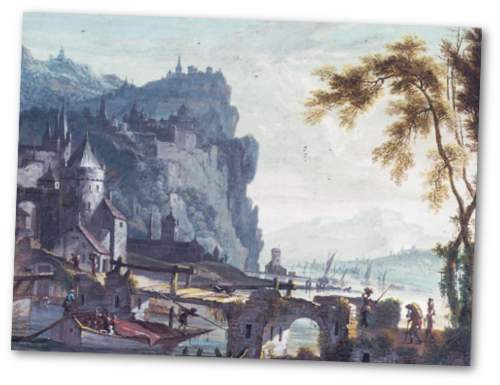
In Adventure Town, you are all trying to invest in the buildings around your town, building them up to make this town more appealing and generate more money when adventurers pass through. Each turn, there’s a phase of dice rolling, representing economic activity and your own plans as a member of the area’s ruling groups. Then, adventurers pass through the town.
I’m not sure if adventurers pass through the town every turn, or if that’s triggered by dice events, too – and while your town is small, only one adventurer passes per round, growing as your town grows. The adventurers have wants or needs, and that means businesses that relate to those needs get more income, and that income benefits most the people who own those businesses.
Now the question from here is how much of anything does this need?
There are three basic values that will give all the rest of the math in this game shape. How many buildings are there? How many adventurer cards need to be, at minimum? How many types of trigger should there be?
We’re going to assume symmetrical distribution of each, by the way. Unequal distribution is good for games with fewer random elements, as they make the rarer incidents feel more wild; in this case, the dice are going to present a randomness for all players, and we don’t want people to be able to bank on long shots that then fail because the dice didn’t come up from them. I want choices to matter, and in this case that means trying to keep people from getting too far ahead with either lucky long-shots or unlucky crap-outs.
When you’re doing this kind of design, there really is no right or wrong place to start. I want the towns to be printable on an A4 sheet, which gives me a boundary to work within. I drew a few designs for the town as a 3×3 group of buildings, then a 4×4, then a 5×5, and a 6×6. 6×6 got a little small for my tastes as an A4 page, so a 5×5 it is. The central square is the town hall, which nobody owns, meaning we have 24 potential buildings.
With 24 buildings, what do we have that can divide into that equally? Well, one option is 24 adventurers that trigger each building uniquely. That’s a bit dull though – it means that once an adventurer triggers a building, you have to wait until that adventurer loops back around. You can’t have any ‘really good days’ when a building gets triggered once or twice in a turn. Also, do we want adventurers to only have one trigger symbol?
Working on the idea that all adventurers need one or two symbols, that we have 24 buildings, I went to this Combinatorics calculator, and jammed numbers in it for a while. If there are 6 symbols, which can be repeated and where the order doesn’t matter, and you pick 2, there are 21 combinations. 21 is a good number for a deck of cards – it’s not too small to shuffle nor is it too big to handle quickly, and it’s small enough I can add some cards to it if I want to.
That is how it’s done, by the way – how I do it, at least. I jam numbers into things to see how long it takes to work.
This has an additional possible application. If there are 6 symbols, and there are 6 faces on a die, it might be that people can spend a dice to trigger a symbol that corresponds to it. I don’t know if I’ll use that, but it’s an option!
Next time, we’ll talk about tools.
The Process of a Meme
Sometimes, the idea just bursts into place, fully formed. I just arrive with the inspiration and execution all at once.
Sometimes, I need to ask someone how I’d do it. It’s a matter of a back and forth, where I know what I’m trying to get to, but they don’t know that yet.
When we talk, there’s always an understanding, though, that they don’t really know what I’m doing, what I’m planning. They just know I’m going somewhere.
Very occasionally, I’ll ask someone who’s done it before. They’ve had a better version of this idea, they’re an expert in it. Most of the time, they’ll see what I’m doing.
These are the times when I start to doubt myself, where they’ll tell me what what I’m doing is kind of obvious, or worse, where I’ll realise that this is pretty pointless.
Then there’s that point where I’m just kind of sadly standing over what I’ve done, what I’ve finally made, and I brace for the reactions, wondering if it’s good enough…
TALEN
Delete this
I HATE THIS
this is the worst
Oh my god
talen, seriously
I don’t get it
oh hang on
ffffffffff
Story Pile: Arrested Development, Part II
After the first series of Arrested Development, seasons 1-3, they revived it. Who’s they? The wizards, I dunno. The point is, thanks to the neverending zombie franchiseland that is Netflix and the endless well of relaunch fever for people who were noticing we were approaching or in middle age desperately tried to head back to the mid eighties, Arrested Development was brought back to life in 2013.
It’s not very good.
Continue Reading →Distracted Boyfriend Is Strange
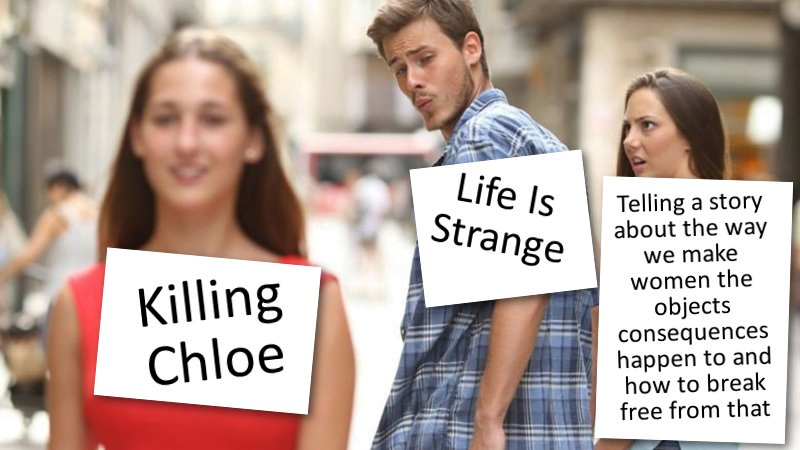
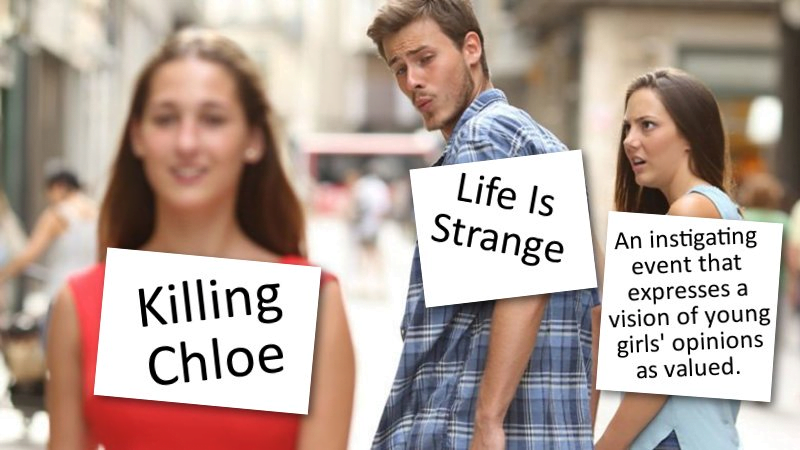
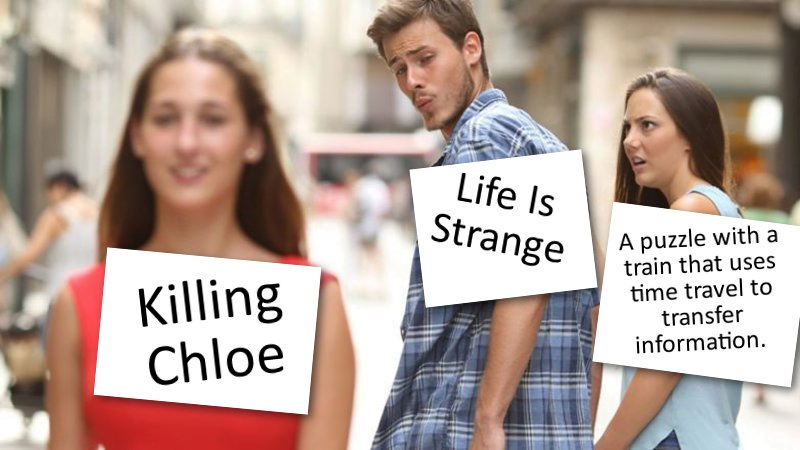
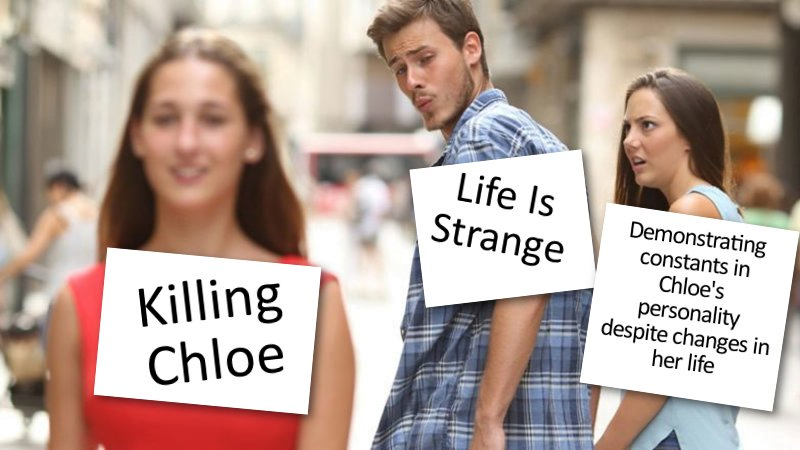
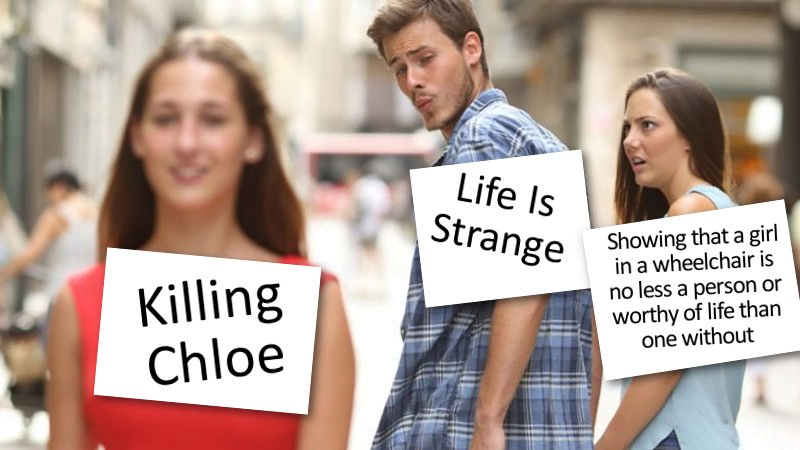
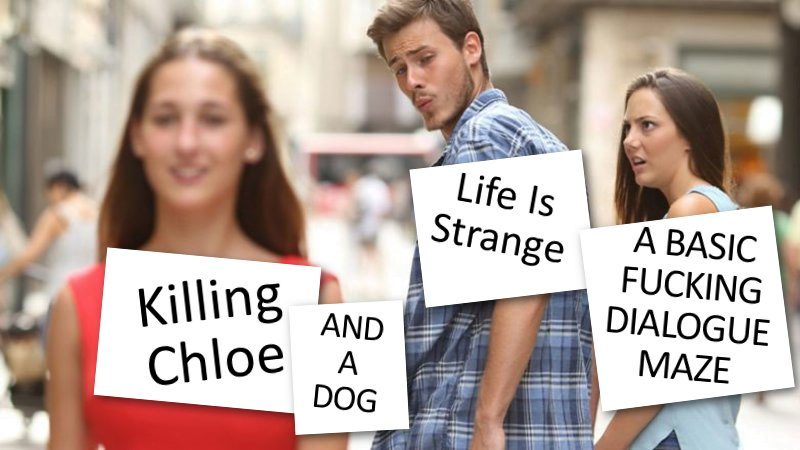
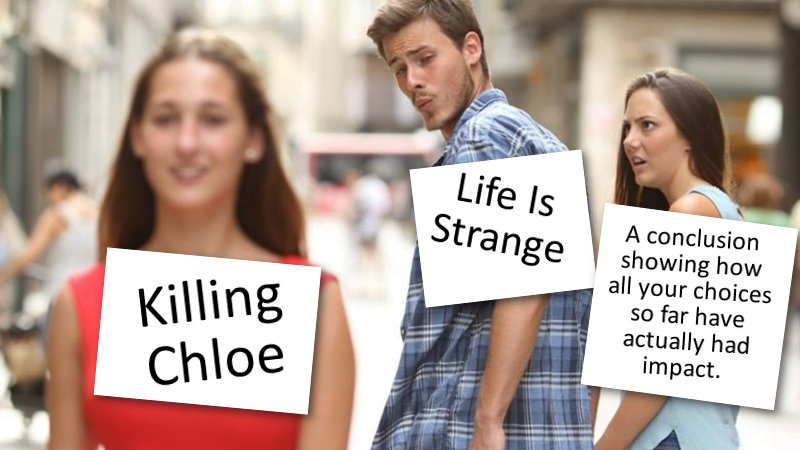
MTG: Pet Cards VIII, Shadowmoor And Eventide
This block – made up of two sets, a design that we’ll see we’re going to get to see a lot more of in the coming future – was a pleasant surprise after Lorwyn. I hadn’t been so attuned to spoiler season that I knew what was coming, but once it dropped it all made a lot of sense: Lorwyn was an experimental contrast, an opposition in design to where they wanted Shadowmoor to get.
The whole set was built around a hybrid colour mechanical theme and a grim fairy tail flavour theme. While Lorwyn was about can you get value out of these cards, Shadowmoor was much more about can you even cast these cards, and then, those cards you could cast were generally pretty good. Play was still complicated – you had to manage a bunch of colours was pretty annoying – but you still didn’t have the same ‘three lords, you’re boned’ draft environment.
MOVED POST 4
This post was deemed important to my PhD and has been moved to my academic blog. If you don’t know where that is, that’s okay! Or you can contact me to ask me where to find it.
Otherwise, don’t worry about it.
Game Pile: Hyrule Warriors
I have kind of bought Hyrule Warriors twice now, and never played it. It’s a game for Fox, a game that blends together her beloved Legend of Zelda universe – a series normally renowned for kind of tight, expertly designed small-scale adventure problems – and the indulgent, wide-open reckless ridiculousness of a Dynasty Warriors game, known as the genre of Musou. I say it’s a genre because even if nobody else was making Dynasty Warriors-like games, there are enough of them to be a genre.
Content Warning: Will contain spoilers for the plot of Hyrule Warriors.
How Unrepresentative Can The US Voting System Be?
What is the optimally “unfair” possible U.S. election? Assuming you can just set the vote ratios in each state to whatever unrealistic value you want. How much can you lose popular vote by and win the Presidency?
This isn’t a comprehensive view of this idea, but a rough summary. Still, it’s an interesting question and let’s explore it. Note that these results involve literally no breaking rules. These are just the ways the system functions based on changes in circumstances. Consider these urine samples from an extremely unwell system.
Who Wants To Date An Adventurer?
At the tail end of April, first day of May, depending on where you stand around the international date line, I put out some Twitter polls that asked how smoochable people thought the various races of Dungeons and Dragons were.
Are you curious about the outcome?
Continue Reading →Story Pile: Arrested Development, Part I
Here’s the story of a television show that fell apart in an amazing way, and came together as the average of the sum of its parts.
Continue Reading →What’s Nyarr?
Hey, what have I been up to these past few days? Well, I was writing up the Nyarr.
What’s a Nyarr?
The Nyarr are going to be this June’s tabletop release. They’re not going to be a card game – they’re a new ancestry for your tabletop RPGs, released as my Lost Libram line of content. Lost Libram is my division of my work that’s from my older D&D work, stuff I never released because hey, 4ed came out and my friends are playing that now.
As a designer, I still love this old content, and realising there’s a market for it, I decided I wanted to get it out there. Especially since a lot of writing of this type isn’t mechanical, it’s conceptual, it’s giving flavour and tone for the stuff I’m sharing. RPG writing is in a lot of ways bits that you playtest.
Here’s an excerpt:
Nyarr are humanoids comparable in size to humans, ranging between 150 cm (5 feet) and 195 cm (6-½ feet) tall. Despite their size though they are markedly heavier than humans, ranging from 72 kg (160 lbs) to 118 kg (260 lbs). Nyarr have skin hues that range from a dark brown to a pale green, and some Nyarr are coloured blue or purple. Nyarr have soft plates of chitin on their skin on their shoulders and knees, and their feet are split into two large forks, rather than five small toes. In silhouette, Nyarr are most like humans, though with larger feet and hands.
Nyarr are most easily distinguished from humans by a number of secondary traits; Nyarr have scaled hands with pronounced, thick fingernails that look like claws, scaly plates on their shoulders, horns – typically two, though rarely four, – long, thin tails, sometimes splitting with feet that stretch up into a ‘high’ stance for running. A Nyarr running tends to lean forward a great deal. These traits have been called ‘demonic’ and ‘monstrous’ commonly, though their actual threat is quite minor; the scales protect their hands for fine manipulation in extreme environments, and the horns and tail allow them to steer while running more readily in areas like cliffsides or desert plains.
Nyarr gender differentiation is complex to explain, as Nyarr have at least three major genders. Their words for each gender are translated as generally ‘male’, ‘female’ and ‘onyar’. Physical differences between the genders are hard to determine; roughly half of Nyarr have a shape regarded by some students as ‘feminine’, but commonly-recognised indicators like hips and breasts are not common to the genders. While female Nyarr tend to have shapes other cultures regard as ‘feminine’, and male Nyarr tend to have shapes regarded as ‘masculine,’ these are not hard rules at all. Onyar Nyarr vary the most, with some onyar having prominently powerful arms and legs, with a more petite body trunk. Some Nyarr tribes even send out explorers to learn from other Nyarr other genders, trying to find the best ideas for their people to choose.
The Nyarr then, are a deliberately enby inclusive race of cool monster people for Dungeons and Dragons 3.5, who are powerfully social, deliberately cooperative, and inclined towards trying to make friends, even as they are careful about trusting the rest of the world for being hazardous to their culture at large. Visually they’re kind of like big-footed and big-handed Tieflings, and they have culturally, an idea of ‘choosing’ genders from their three major genders, with the understanding that some Nyarr choose other genders if they’ve heard of them.
One detail here, and which I’m putting out there to put on the record even if I fumble how I say it: I am recruiting non-cis artists and writers to contribute small bits to the text of this. My thinking on this is pretty simple: The Nyarr represent a way for a game player, someone who isn’t necessarily heavily connected to the world of nonbinary genders, to be introduced to them, and, as a creature in a game, it gives people a chance to play with, and come to understand that idea. If I’m going to put that kind of thing out there for people to include in their game, I’d want to make sure that people with experiences like the Nyarr interacting with other cultures, are able to put their mark on the work.
Complicating almost all relationships Nyarr have with other cultures is the expansionist trends of almost every non-Nyarr culture. Nyarr have a phrase that translates roughly as Be Wary Of Those People. In the past, Dwarves have hollowed out mountains that Nyarr considered home, collapsing the landscape underneath them. Humans have cleared forests they considered home and turned them to furniture and machinery. Elves have magically tamed jungles and ousted Nyarr from the trees they considered home, in the name of making them more like their own forests. Nyarr tend to view all these cultures as invasive.
Humans and dwarves are very much cultures that judge and compete, and view survival as a personal thing. Nyarr culture rejects these ideas, and sees survival as being a shared responsibility. Also the humourlessness and lack of fun in Dwarf culture is abhorrent to Nyarr outlooks – to survive without an ability to feel joy is to be as good as dead. Dwarves can sometimes appreciate Nyarr because of their survival abilities, while others see Nyarr and their culture of change and cooperation as weak and strange.
The cultures less prone to building empires and starting wars tend to cooperate with Nyarr better – particularly orcs, who rarely want territory that Nyarr alone can hold. Nyarr feel a kinship with the half-humans like the Half-Elf and Half-Orc, seeing them as something a bit like themselves; outsiders in a group.
It’s a little ostentatious, I guess, but I want to be careful about the ethics of it. I don’t want to stomp into gaming with Here Is A Trans Metaphor For You, As Expressed By Me, A Cis.
If you’re at all interested in this, if you’d like to give the Nyarr a read before their release, let me know. I don’t pretend to be an expert, and I can’t really afford a proper high-grade sensitivity reader, but if you’re curious, let me know.
MTG: Tetsuko Umezawa, Commander
My my my, ain’t she cool?
When [mtg_card]Tetsuko Umezwa, Fugitive[/mtg_card], was spoilered I didn’t remember having a striking reaction. She wasn’t a ninja, which was a bummer, but then, she shouldn’t have been. Her ancestors weren’t. Her ability was just cryptic enough that I didn’t really parse it at first.
Now I’ve had a chance to play with the gal and boy howdy.
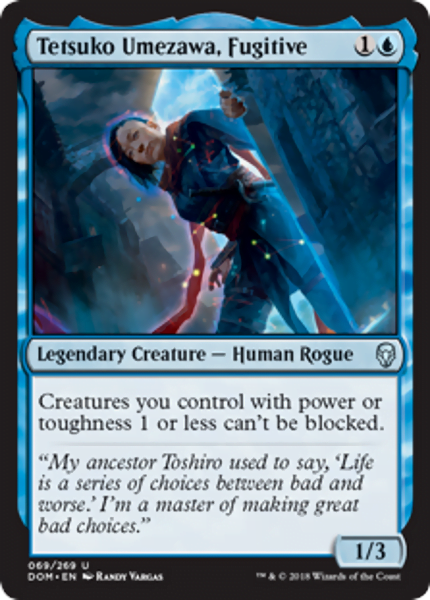
MOVED POST 3
This post was deemed important to my PhD and has been moved to my academic blog. If you don’t know where that is, that’s okay! Or you can contact me to ask me where to find it.
Otherwise, don’t worry about it.
Game Pile: Rhino Hero
At some point in the past two years I really did shift my attention as a writer from let’s take videogames seriously to let’s take games seriously, and part of that was an appreciation for tabletop and board games. Videogames were fast on track to become the biggest industry in the world, and the people loudly proclaiming they wanted more, different takes on videogames showed me that even if they did want them, they didn’t want them from me, since they’d much rather renew arguments about ‘are games art?’ and make fun of Ludonarrative Dissonance for being a long term.
Let’s be clear – at no point since this blog existed have I not been playing tabletop games. Mostly, what I’ve been playing have been RPGs and CCGs, but I’ve still been in those game spaces. But it wasn’t until a year or two ago – when I realised the boundary for making board games was so low that I could just jump into it, rather than needing to cultivate a new skillset like code.
And one of the first games I got to watch played, that blew my mind as a maker was this.
This game.
The Winged Hussars
Do you know much about Poland?
Do you know about its super-army of furries?
Blog Tips – Queues and Bins
I blog a lot. I blog constantly. I try to make sure, when I can, I write something every day. Whether it’s big or it’s small. The big trick for me is finding a thing to write about, which can sometimes make for a long or short post. It’s you know, the challenge of finding the thing about ‘what gets me started.’
Here are two blog habits that have helped me though:
Queue in Advance
Don’t post your blogs when you write them. Post them a week later. Schedule them. Why the delay? Because it means you’re not going to be fuelled by the now, by an immediate and urgent need to express. You’ll have time to go back an double check what you said. You’ll have the opportunity to revise or expand as events change. The hottest of takes is the worst of takes, because hot take theatre is just the way to rile up hot emotions. Let your takes cool.
Make a Draft Bin
Every time I get an idea for a blog post when I’m near my computer, I try to jot down a phrase or an idea and throw it into a draft post in my blog. That means when I’m scrabbling for ideas, I can come back to these things and see what ideas have been on my mind, and give me a chance to well, sculpt a well-cooled take around an idea, maybe do some research for a thing that needs it.
Story Pile: Why Cap Ain’t Supe
The comparison between Superman and Captain America is very much like the comparison between tractors and trucks. They’re not an unreasonable comparison to make, especially when you only know of either thanks to movies, but the more you know about either the less the comparison works. The two have some very broad similarities, but when you start to talk about the kind of stories they can tell, things start to break down.
The Pop Of Porn and ASMRtifacts
Media does weird things.
First things first you’re going to need to know what ASMR is before I keep going. It’s a hard-to-explain thing, so let’s go with an arch, academic-sounding definition then get fuzzier. ASMR, standing for Autonomous Sensory Meridian Response, is an experience characterised by tingly feelings across the skin, alike to static electricity, often running down from the top of the scalp down to the back of the neck, which seems to be experienced by a non-majority population of the world.
It is hard to study because it’s a thing people may not even realise they do experience, it’s an individualised experience, and there aren’t clear, hard predictive triggers. Some people get it from a few things, some get it from a lot, and some people may never discover that they’re affected by it. It is not necessarily sexual – despite the title of this post – but for some people it is.
ASMR culture on youtube is therefore a grouping of channels, often with odd titles which seek to promote to you different and sometimes blisteringly specific scenarios, containing things like ‘tapping’ ‘squish sounds’ ‘no talking’ ‘personal attention’ and the like.
I’ve been thinking about this XKCD strip:
And I’ve been thinking about it in light of ASMR.
The idea of the comic is pretty funny but it’s also pretty easily grasped. Things we experience in our developing lives impress upon us in odd ways. Rather than being overly invested in the pornography itself, the narrator is impressed upon by the medium of the comic. There’s always, with XKCD, a sort of boring futurism where the audience tend to make every comic self-fulfilling. You’ll find people holding [Citation Needed] signs at rallies, for example, and there were people saying they were sure that this person really existed and reflected a real experience.
ASMR videos are often made with sensitive audio equipment that capture a lot of noise and create the impression of existing in a space, and do their best to create a blanket of white noise. I have some very nice headphones (a gift from a friend) and this means that when I’m listening to an ASMR video, I can often hear things that the track isn’t really meant to have – the sound of birds far away, or the sound of a siren many blocks away. Things you have to really strain to hear.

In addition, I have some experience editing audio. One thing you want to avoid in audio is around the English letter sound p and to a lesser extent, b. These sounds carry a burst of air, which means that they for a tiny moment increase the volume of spoken audio, known as a pop. There’s a whole host of equipment designed to help you minimise these effects, and radio voice – the practice of speaking to recording devices – tends to have non-severe P sounds. They are, when you hear them in professional audio recording, basically an error. Software can get them out, hardware can prevent them happening, you should probably never hear pops on audio tracks.
ASMR videos are full of pops.
ASMR videos are often built out of experiences of intimacy and comfort from points in our youth. Things like being the focus of attention for a non-failable test, hairdresser visits, hearing exams, having your makeup done – lots of different scenarios. The super-sensitive audio devices pick up the pops and the pops seem to be things the audience respond to. It might be because it reminds people of old audio software, but it also might be because feeling someone draw a breath, or hearing someone pop when they say a word creates the same illusion of experience as you get when someone is whispering in your ear. Even moreso, starter videos tend to have fewer pops, but as people get more familiar, they pop more, because audiences respond well to the sound.
The overlap of an error in audio recording (in most situations) with an intended affect (in a highly specific situation) comes back to the XKCD strip. The idea at its root, that we can fall in love with things that are themselves limits of technology.
